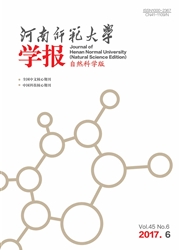

 中文摘要:
中文摘要:
对武汉市东湖沉积物代表性样品NS-1,NS-9,NS-35和NS-68的任意磁性颗粒进行系统的扫描电镜和能谱(SEM/EDx)分析,确定武汉市东湖沉积物磁性颗粒的矿物相、相对含量及与人类活动的关系.NS-1采样点紧靠环湖公路,NS-9位于湖中心,NS-35位于旅游大道附近,NS-68距离武汉钢铁公司较近.它们的磁学特征进一步验证了上述方法的可靠性.结果表明4个样品皆含有磁铁矿;它们的磁性颗粒磨蚀度较低,说明磁性颗粒沉积地点距物源较近;能谱特征相似的磁性颗粒,矿物相相似;球形磁性颗粒和部分含有标识元素的有棱有角的颗粒主要来自“人造”污染源,其矿物相与人类活动密切相关.
 英文摘要:
英文摘要:
Relationship between the human activities and the composition and the relative content of the magnetic minerals is determined by the system analysis of the scanning electron microscopy (SEM) and energy dispersive X-ray examinations (EDX) on the arbitrary magnetic particles of the representative sample NS-1, NS-9, NS-35 and NS-68 for Donghu lake sediments, Wuhan City, NS-1 is near the lakeshore, NS-9 in Lake Centre, NS-35 near the sightseeing routine, NS-68 is close to Wuhan Iron and Steel Company. Their magnetic characteristics have verified the reliability of the above methods. The results show that four samples all contain magnetite, their magnetic particles' abrasion degree is lower, it shows that the magnetic particle deposition locations is near their source. Their energy dispersive characteristics is similar, their main mineral phase is similar. The spherical magnetic particles and the part particles of having prism and angle, which contain identification elements, come mainly from the "man-made" pollution sources, its mineral phases are closely related to human activities.
 同期刊论文项目
同期刊论文项目
 同项目期刊论文
同项目期刊论文
 期刊信息
期刊信息
